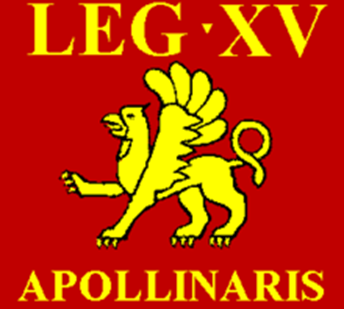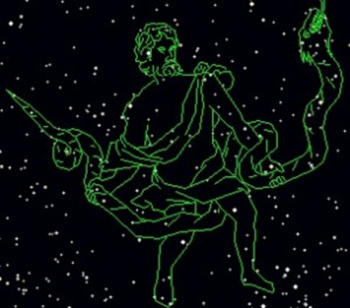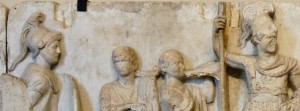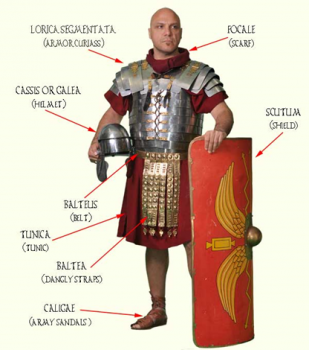Chapter 9 The Siege and Destruction of Jerusalem
__________________________________________________________________________
Verses 1-11 – The Roman Army Siege of Jerusalem - April to September 70 AD
An army arises out of mortal death, symbolized as a swarm of locusts being released from the Abyss, the dark underworld of the dead. This resurrection motif as repeated throughout scripture is truly the rise of the Flavian Dynasty that revived the nearly ‘dead’ Roman Empire by putting an end to the civil war following Nero’s death.
The Roman Empire under the Flavian Caesar is also the beast whose wound had been healed in Revelation 13:3 besides the beast that rises out of the Abyss in Revelation 9:2-3, Revelation 11:7 (further describes the destruction of Jerusalem and the original anti-Christ figure and spirit) and Revelation 17:8.
The ascension of Apollyon and his locust army out of the Abyss is spoken of in Revelation 17:8 as the beast rising out of the Abyss: “The beast, which you saw, once was, now is not, and yet will come up out of the Abyss and go to its destruction.”
Abyss can represent foreign nations, as seas and waters. Thus when Apollyon and his army arose out of the Abyss this also symbolizes the return of Titus and his army from the local Roman conquered nations (the Abyss, sea, waters) to besiege Jerusalem (the earth, the land) in A.D. 70 after his father became emperor. Thus the ascension of this spiritual army from the Abyss also reflected and symbolized ‘on earth’ in both the return of Titus and his army from foreign Rome (the sea or Abyss) to Judea (the earth) to besiege Jerusalem in A.D. 70 as well as in the roughly concurrent resurrection of the beast symbolizing the restoration of the empire at the rise of the Flavian Dynasty.
In Verse 2 of this Chapter 9 and in Revelation 16:10, the beast’s kingdom is plunged into a darkness. Recall that the seven trumpets and bowls of Revelation each describe the same events from a slightly different perspective. In other words, the first trumpet and the first bowl describe the same event as do the second trumpet and second bowl etc. Thus the fifth trumpet of Revelation 9 in which locusts are released out of the Abyss causing the sky to darken (Revelation 9:2) corresponds to the fifth bowl when the beast’s kingdom is cast into darkness (Revelation 16:10).
In A.D. 69, Rome faced what may have been its darkest hour. That year warring generals pitted the empire’s legions against one another threatening to collapse the empire and ultimately resulting in the deaths of three self-proclaimed Caesars. Torn apart by civil war, Rome temporarily ceased its advance into Judea. Then order arose out of chaos as control of the Empire fell securely into the hands of the former general of the Judean War—Vespasian.
There is no global swarming of locusts in the future at the very end of days. These locusts came up, upon the land, a local region or area of land, the land of Judea after 68 AD.
It was typical for real insects of locusts to appear and swarm in the land of Judea annually, between May and September, a period of five months. These ‘locusts’ were allowed to attack relentlessly for five months and strip off all the green stuff. These locusts and their cruel and merciless instinctive habits symbolize as the fitting image of the real Roman army as it lay siege for 5 months and eventually totally destroyed Jerusalem.
The Jewish historian, Josephus, as well as Roman historians, recorded that the Roman armies laid a siege upon Jerusalem in 70 AD which lasted for five months. This siege began in mid-April of that year and lasted until late August/ early September, the very same period when locusts would normally appear in Judea.
The destroying army of the Romans is symbolized as or like real locusts, because of Judah’s unfaithfulness. They rejects Christ and the Father’s Kingdom en masse. The Romans eventually pummeled and stripped away all man-made structures and left nothing unturned as real destroying locusts would strip away all green natural plants, trees or grass that laid in their path.
As that time, the locust Roman army was not given power/ authority to kill the city people, but only to torture them for five months.
Verse 6: During the 5 month Roman army siege of Jerusalem, people were slowly dying of starvation. Many wanted to die yet they hung on to their torturous slowly decaying lives. They sought a quick death and could not find it.
Verse 7b:..they wore golden wreaths on their heads.
The Romans adopted Greek and Spartan military attire, including their head wear.
They wore golden wreaths as crowns. The Roman Emperor wore a golden wreath. It was called the Corona Radiata.
Verse 10: The tails of the horses were said to be like that of a scorpion. John describes a Roman spear with the tail of the snake representing the shaft and the head signifying the tip.
Verse 11: Abaddon and Apollyon is an evil angel of the Abyss, with a distinct evil human and conspicuous counterpart. Apollyon is a creative play on words for “Apollo” and “destroy.” Apollyon is Vespasian’s son Titus, the commander of the Legion XV Apollinaris (the Fifteenth Apollonian Legion).

Emblem on the Shields of the Roman 15th Legion.
He later was promoted to general over all the Roman legions in Judea at his father’s coronation. Thus Apollyon is an appropriate title for the former commander of Legion XV Apollinaris (the 15th Apollonian Legion) who destroyed Jerusalem and its temple.
The soldiers of the Apollonian Roman Legion are represented by locusts because locusts are sacred to Apollo.
Verses 14 – 21 The Roman Army Destruction of Jerusalem – September-October 70 AD
Verse 14: The leaders of Titus’ four legions are the earthly counterparts of the four fallen angels bound at the Euphrates since prior to the fall of Jerusalem. All four of Titus’ legions were at or near the Euphrates in 63 AD.
The sixth trumpet and bowl describe what happened next: Upon Vespasian’s ascension, in A.D. 70, control of the Roman legions in JUdea passed to his son Titus. Desiring a quick victory, Vespasian drew thousands of Roman soldiers and auxiliaries from the Euphrates and neighboring provinces to aid in the war effort. This plague describes the mobilization of these troops and their subsequent assault on Jerusalem.
Verse 16: “And the number of the armies of the cavalry was twice ten thousand ten thousands.” The Greek word for “twice ten thousand” or twenty thousand of “dismyriades.” Each of the three major units of Titus’ army consisted of a dismyriades or 20,000 soldiers.
Jeremiah 46:23 is similar with its description of the size of Nebuchadnezzar’s army – as locusts and their number too great to count.
Two hundred million (is not a literal number) => δισμυριάδες μυριάδων [dismyriades myriadōn] , two myriads of myriads, an essentially countless number. This is a similar phrase to that found in Revelation Rev. 5:11-12 to describe the countless angelic host. Only here, the phrase is doubled for heightened effect. The number should not be thought of as specifically denoting two hundred million, but a vast, essentially numberless host.
Verse 18: According to Josephus’ estimates One-Third of the People were trapped in Jerusalem during the Siege of 70 A.D. They all perished!
Verse 19: The use of astrology is necessary here to decrypt this symbolic language.
The tails of the horses were said to be like that of a snake. John gazes up at the night sky and sees the constellations Serpens Cauda, the snake tail, and Serpens Caput, the snake’s head. Lying directly above Scorpio, these constellations would also have been visible that Passover night at the start of Titus’ five month siege. As in verse 10, John describes a Roman spear with the tail of the snake representing the shaft and the head signifying the tip. John then switches gears in order to turn his readers’ attention away from the tail of Scorpio toward Ophiuchus, the serpent holder, who while holding Serpens Cauda and Serpens Caput resembles a Roman soldier grasping a spear. It should not seem a big stretch that a snake and scorpion tail could represent a spear when in Psalm 57:4 teeth are said to be spears and arrows.

Ophiuchus. “[F]or their tails were like snakes, having heads with which they inflict injury.”
Verse 20: Two-third who survived and were alive continued to defy God and worship idols. They did not repent of their sins under the age of grace, under the rule of Christ in his Father’s Kingdom.
Comments and improvements encouraged.....Blessings!
PS @Mayflower were you not interested in knowing about Chapter 9 recently?
__________________________________________________________________________
Verses 1-11 – The Roman Army Siege of Jerusalem - April to September 70 AD
An army arises out of mortal death, symbolized as a swarm of locusts being released from the Abyss, the dark underworld of the dead. This resurrection motif as repeated throughout scripture is truly the rise of the Flavian Dynasty that revived the nearly ‘dead’ Roman Empire by putting an end to the civil war following Nero’s death.
The Roman Empire under the Flavian Caesar is also the beast whose wound had been healed in Revelation 13:3 besides the beast that rises out of the Abyss in Revelation 9:2-3, Revelation 11:7 (further describes the destruction of Jerusalem and the original anti-Christ figure and spirit) and Revelation 17:8.
The ascension of Apollyon and his locust army out of the Abyss is spoken of in Revelation 17:8 as the beast rising out of the Abyss: “The beast, which you saw, once was, now is not, and yet will come up out of the Abyss and go to its destruction.”
Abyss can represent foreign nations, as seas and waters. Thus when Apollyon and his army arose out of the Abyss this also symbolizes the return of Titus and his army from the local Roman conquered nations (the Abyss, sea, waters) to besiege Jerusalem (the earth, the land) in A.D. 70 after his father became emperor. Thus the ascension of this spiritual army from the Abyss also reflected and symbolized ‘on earth’ in both the return of Titus and his army from foreign Rome (the sea or Abyss) to Judea (the earth) to besiege Jerusalem in A.D. 70 as well as in the roughly concurrent resurrection of the beast symbolizing the restoration of the empire at the rise of the Flavian Dynasty.
In Verse 2 of this Chapter 9 and in Revelation 16:10, the beast’s kingdom is plunged into a darkness. Recall that the seven trumpets and bowls of Revelation each describe the same events from a slightly different perspective. In other words, the first trumpet and the first bowl describe the same event as do the second trumpet and second bowl etc. Thus the fifth trumpet of Revelation 9 in which locusts are released out of the Abyss causing the sky to darken (Revelation 9:2) corresponds to the fifth bowl when the beast’s kingdom is cast into darkness (Revelation 16:10).
In A.D. 69, Rome faced what may have been its darkest hour. That year warring generals pitted the empire’s legions against one another threatening to collapse the empire and ultimately resulting in the deaths of three self-proclaimed Caesars. Torn apart by civil war, Rome temporarily ceased its advance into Judea. Then order arose out of chaos as control of the Empire fell securely into the hands of the former general of the Judean War—Vespasian.
There is no global swarming of locusts in the future at the very end of days. These locusts came up, upon the land, a local region or area of land, the land of Judea after 68 AD.
It was typical for real insects of locusts to appear and swarm in the land of Judea annually, between May and September, a period of five months. These ‘locusts’ were allowed to attack relentlessly for five months and strip off all the green stuff. These locusts and their cruel and merciless instinctive habits symbolize as the fitting image of the real Roman army as it lay siege for 5 months and eventually totally destroyed Jerusalem.
The Jewish historian, Josephus, as well as Roman historians, recorded that the Roman armies laid a siege upon Jerusalem in 70 AD which lasted for five months. This siege began in mid-April of that year and lasted until late August/ early September, the very same period when locusts would normally appear in Judea.
The destroying army of the Romans is symbolized as or like real locusts, because of Judah’s unfaithfulness. They rejects Christ and the Father’s Kingdom en masse. The Romans eventually pummeled and stripped away all man-made structures and left nothing unturned as real destroying locusts would strip away all green natural plants, trees or grass that laid in their path.
As that time, the locust Roman army was not given power/ authority to kill the city people, but only to torture them for five months.
Verse 6: During the 5 month Roman army siege of Jerusalem, people were slowly dying of starvation. Many wanted to die yet they hung on to their torturous slowly decaying lives. They sought a quick death and could not find it.
Verse 7b:..they wore golden wreaths on their heads.
The Romans adopted Greek and Spartan military attire, including their head wear.
They wore golden wreaths as crowns. The Roman Emperor wore a golden wreath. It was called the Corona Radiata.
Verse 10: The tails of the horses were said to be like that of a scorpion. John describes a Roman spear with the tail of the snake representing the shaft and the head signifying the tip.
Verse 11: Abaddon and Apollyon is an evil angel of the Abyss, with a distinct evil human and conspicuous counterpart. Apollyon is a creative play on words for “Apollo” and “destroy.” Apollyon is Vespasian’s son Titus, the commander of the Legion XV Apollinaris (the Fifteenth Apollonian Legion).

Emblem on the Shields of the Roman 15th Legion.
He later was promoted to general over all the Roman legions in Judea at his father’s coronation. Thus Apollyon is an appropriate title for the former commander of Legion XV Apollinaris (the 15th Apollonian Legion) who destroyed Jerusalem and its temple.
The soldiers of the Apollonian Roman Legion are represented by locusts because locusts are sacred to Apollo.
Verses 14 – 21 The Roman Army Destruction of Jerusalem – September-October 70 AD
Verse 14: The leaders of Titus’ four legions are the earthly counterparts of the four fallen angels bound at the Euphrates since prior to the fall of Jerusalem. All four of Titus’ legions were at or near the Euphrates in 63 AD.
The sixth trumpet and bowl describe what happened next: Upon Vespasian’s ascension, in A.D. 70, control of the Roman legions in JUdea passed to his son Titus. Desiring a quick victory, Vespasian drew thousands of Roman soldiers and auxiliaries from the Euphrates and neighboring provinces to aid in the war effort. This plague describes the mobilization of these troops and their subsequent assault on Jerusalem.
Verse 16: “And the number of the armies of the cavalry was twice ten thousand ten thousands.” The Greek word for “twice ten thousand” or twenty thousand of “dismyriades.” Each of the three major units of Titus’ army consisted of a dismyriades or 20,000 soldiers.
Jeremiah 46:23 is similar with its description of the size of Nebuchadnezzar’s army – as locusts and their number too great to count.
Two hundred million (is not a literal number) => δισμυριάδες μυριάδων [dismyriades myriadōn] , two myriads of myriads, an essentially countless number. This is a similar phrase to that found in Revelation Rev. 5:11-12 to describe the countless angelic host. Only here, the phrase is doubled for heightened effect. The number should not be thought of as specifically denoting two hundred million, but a vast, essentially numberless host.
Verse 18: According to Josephus’ estimates One-Third of the People were trapped in Jerusalem during the Siege of 70 A.D. They all perished!
Verse 19: The use of astrology is necessary here to decrypt this symbolic language.
The tails of the horses were said to be like that of a snake. John gazes up at the night sky and sees the constellations Serpens Cauda, the snake tail, and Serpens Caput, the snake’s head. Lying directly above Scorpio, these constellations would also have been visible that Passover night at the start of Titus’ five month siege. As in verse 10, John describes a Roman spear with the tail of the snake representing the shaft and the head signifying the tip. John then switches gears in order to turn his readers’ attention away from the tail of Scorpio toward Ophiuchus, the serpent holder, who while holding Serpens Cauda and Serpens Caput resembles a Roman soldier grasping a spear. It should not seem a big stretch that a snake and scorpion tail could represent a spear when in Psalm 57:4 teeth are said to be spears and arrows.

Ophiuchus. “[F]or their tails were like snakes, having heads with which they inflict injury.”
Verse 20: Two-third who survived and were alive continued to defy God and worship idols. They did not repent of their sins under the age of grace, under the rule of Christ in his Father’s Kingdom.
Comments and improvements encouraged.....Blessings!
PS @Mayflower were you not interested in knowing about Chapter 9 recently?
Last edited:



